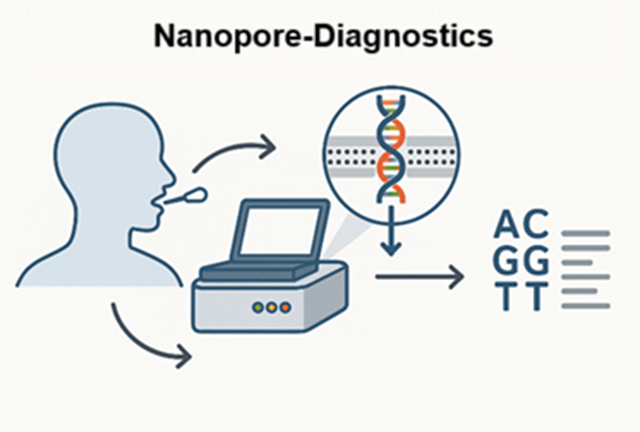What is Nanopore Diagnostics?

Nanopore diagnostics is a modern method for analyzing biomolecules – especially DNA, RNA, or proteins. It uses a tiny pore (nanopore) through which individual molecules are guided. As they pass through, they measurably alter an electric current. Based on these current changes, conclusions can be drawn about the structure and identity of the molecule
Basic Principle of Nanopore Diagnostics
- Nanopore: An extremely small hole – about 1 nanometer (nm) in size – embedded in a membrane.
- Ion Current: An electrical voltage is applied to the membrane, allowing ions to flow through.
- Molecule Passage: A biomolecule (e.g., DNA) is pulled through the pore.
- Current Change: The molecule partially blocks the ion flow → characteristic current signals are generated.
- Analysis: The current patterns are recorded and analyzed by computer.

OpenAI (2025). KI-generiertes Bild: Nanopore-Diagrnostics
Advantages of Nanopore Technology
- Can analyze individual molecules
- Fast and cost-effective
- Directly reads long DNA fragments (Long Read Sequencing)
- Suitable for portable devices